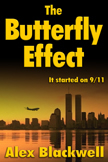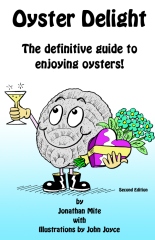 |
 The Bees In Your Backyard
The Bees In Your Backyard
A Guide to North America’s Bees
By Joseph S. Wilson & Olivia Messinger Carril
Princeton University Press, Softcover, $29.95/£19.95, 288 pages, 8 x 10, 926 colour photos, 1 table, 99 maps ISBN: 978-0-691-16077-1, publication date 30 December 2015, eBook ISBN: 978-1-400-87415-6.
Okay, so what’s a book about bees doing here? Because I am a bee enthusiast and supporter. I want to see bees make a comeback. I want to help promote understanding of the pivotal role bees play in our lives and those of many species on this earth.
We live by the sea where we keep our boat. On our land, we have a bee hive and we’ve been learning what we can about bees so we can help them survive and thrive. Bees are critical members of our environment and essential to our survival on this earth, yet they’ve been dying out at an alarming pace in many places. Without bees to pollinate our orchard and gardens, we won’t have fruit and vegetables on which to live. Without them to pollinate our flowers, the world will become a rather dull place.
The Bees in Your Backyard is a stunning book that provides a comprehensive guide to the roughly 4,000 different bee species in the United States and Canada. The authors, both biologists who have been studying bees for decades, have created an exceptional reference that novices and experts alike will find not just comprehensive and informative, but also invaluable for understanding bee behaviour and their role in the environment we live in.
I have always known there are many types of bees but I had no clue how many and how varied they truly are. The book begins with a simple guide to identifying bees and distinguishing them from wasps. (Wasps have long thin bodies with a narrow waist, long slender spiny legs, and few hairs. Bees have lots of hair including some that is branched like tiny feathers, four wings, eyes on the side of head.) The method the authors introduce for identifying different bees makes it quite simple to do by process of elimination. It also alerts the reader to bees’ natural enemies.
Even better is the set of tables that sets out the type of flower and colour that attracts bees by month in various regions. If you want to attract bees to your garden, this makes it a snap. You can ensure that your bees are well fed all season long. It even provides gardening advice, like bees prefer large clusters of flowers, choose plants that have not been treated with pesticides, select native plants as bees do not like ornamentals, and mix decorative flowers with vegetables and herbs that you allow to bolt or flower. Sound advice for a productive garden all around.
After this informative introductory chapter, the book branches out to cover the six main subfamilies of bees and their respective genera. There is no more comprehensive guide. It covers the key identification features, distribution, diets, nesting habits and much more.
The decline of bees in recent years has led to a growing awareness of the crucial ecological role of bees in our world. The Bees in Your Backyard will not only help you increase your personal awareness of bees but will also help you attract them to and protect them in your environment.
Give bees a chance!
Print Edition |
|
Amazon US |
Amazon UK |
|
White Seahorse (Reg. in Ireland, #444071) is a division of Knowledge Clinic Ltd.
Europe: Port Aleria, Rosnakilly, Kilmeena, Westport, Co. Mayo, Ireland - USA: PO Box 726, Mahwah, NJ 07430 All content on this site is subject to Copyright© |











